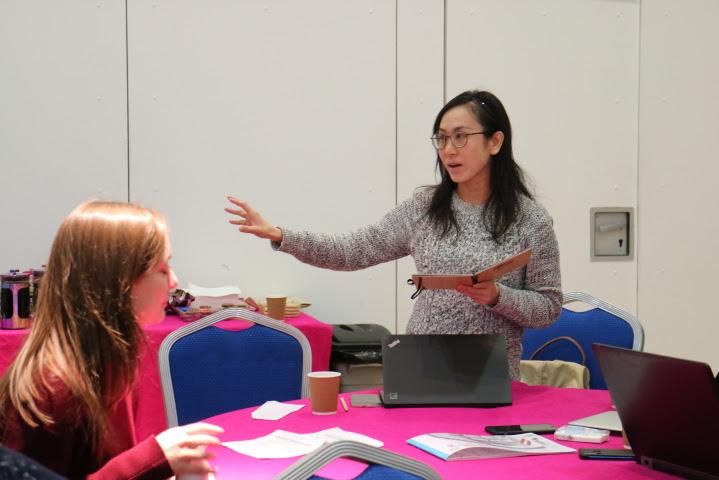
Winter School 2020: Cultural Heritage & Outreach, a wellbeing perspective in Newcastle
From Monday January 27 until Friday January 31 2020 professionals from Belgium, Canada, Israel, Hong Kong, Italy, United Kingdom, The Netherlands and Canada gathered at Great Museum North: Hancock in Newcastle for a unique training week on the deployment of cultural heritage for outreach activities with a focus on wellbeing. It was very intense and busy, but I am trying to summarize this week in a nutshell.
History
Since 2014 FARO, the Flemish interface centre for cultural heritage, and The National Archives UK organized Summer & Winter Schools Archives & Education. Since the fifth edition, the focus has shifted to the development of outreach programs for well-being. The previous editions brought together participants from Hong Kong, Sweden, Poland, Belgium, the Netherlands, Mexico, Denmark, Italy, Russia, France, the United Kingdom, Canada, Estonia and the United States. These trainings were a great success and the participants thought it was a unique experience. You can view some photos of the previous editions online (2014, 2015, 2017, 2018, 2019).
For the sixth edition FARO travelled, accompanied by the Museum Dr. Guislain and the Heritage House of the Sisters of Charity, to the northeast of England to team up with the outreach team of Tyne & Wear Archives & Museums (TWAM) in Newcastle. TWAM is top notch when it comes to reaching communities and vulnerable people.
Workshops, an overview
At the start of the winter school, participants were given an overarching theoretical framework by Bruce Davenport from Newcastle University. He stood still at the different dimensions of the concepts around which the winter school is built, namely cultural heritage, wellbeing and communities. He also had an eye for the political dimensions of the increasing importance of focusing on wellbeing and measuring and evaluating the impact of wellbeing activities. The subsequent workshops gave the participants tools for the project they were to develop that week.
Kaat Leeman, co-ordinator of the Heritage House of the Sisters of Charity in Ghent, gave a hands-on workshop on object handling and insight into the importance of touch for well-being and emotions. Because working with communities is often central, Bart Marius, artistic director of Museum Dr. Guislain, delivered a workshop on the development an offer based on an asset-based approach. The starting point is the strengths of a community and the use or bringing together of everything that has value or significance on a local level, such as social services, welfare organizations, people, associations, places, cultural heritage and stories.
Because real knowledge and expertise can only be built up in practice by just doing things, the outreach team of TWAM took the participants into some of the activities they offer to specific target groups. After a joint words exercise based pieces in the collection, they walked in groups with them in the greenery around the museum for sketchy walks and they made bath soap inspired by the Egyptological collection.
In a workshop, I gave the participants insight into the design of a sustainable and long-term wellbeing offer. With regard to the general conditions, challenges, concrete structures and methodologies, I was able to fall back on, among other things, the pilot projects that FARO has set up since 2016.
As a final workshop FARO colleague Alexander Vander Stichele delivered to the participants a workshop how they can measure and evaluate wellbeing activities with cultural heritage.
Projects
After this cartload of insights, methodologies and inspiring cases, the participants were given the assignment in the middle of the week. They were asked: “to develop a concept for a project that fits into the chosen domain and the in advance defined parameters. Design it as an offering that is composed of three stages (see inspiration, building and results / outcomes). Make a business model for the operational and engagement side of the project.” Depending on the domain they chose, the participants were divided into groups. Details of the assignment can be found here.
Five groups presented the following very inspiring and well-developed projects on Friday morning:
- The Train Scouts: leading teens to the museum
Alexander Vander Stichele (FARO), Kris Vlaeminck (Train World), Talila Yehiel (Mofet Institute) - A Touch of Fashion
Laureen Harder-Gissing (Mennonite Archives of Ontario/Milton Good Library), Julie Moorkens (MoMu Antwerp), Noelle Opdebeek (MoMu Antwerp), Evelien Vanden Berghe (Museums Bruges) - House of Cards: The Imagery of Home
Marika Mascitti (University Roma Tre), Pia van Kroonenburgh (Brabant-Collectie), Gilke Gunst (University Centre Saint-Ignatius Antwerp), - Project Love Box. Remembering and Personal Encounter through lovely objects
Nadia Babazia (Red Star Line Museum), Florence Lo (HSBC Archives), Ellen Decraene (University Centre Saint-Ignatius Antwerp) - Youth at a Crossroads
Monique van den Dries (Leiden University), Lara Hardeman (Neighborhood Health Center De Kaai Ghent), Kristine Timperman (Museum Dr. Guislain), Liesa Rutsaert (Museum Huis van Alijn/Museum of Industry)
